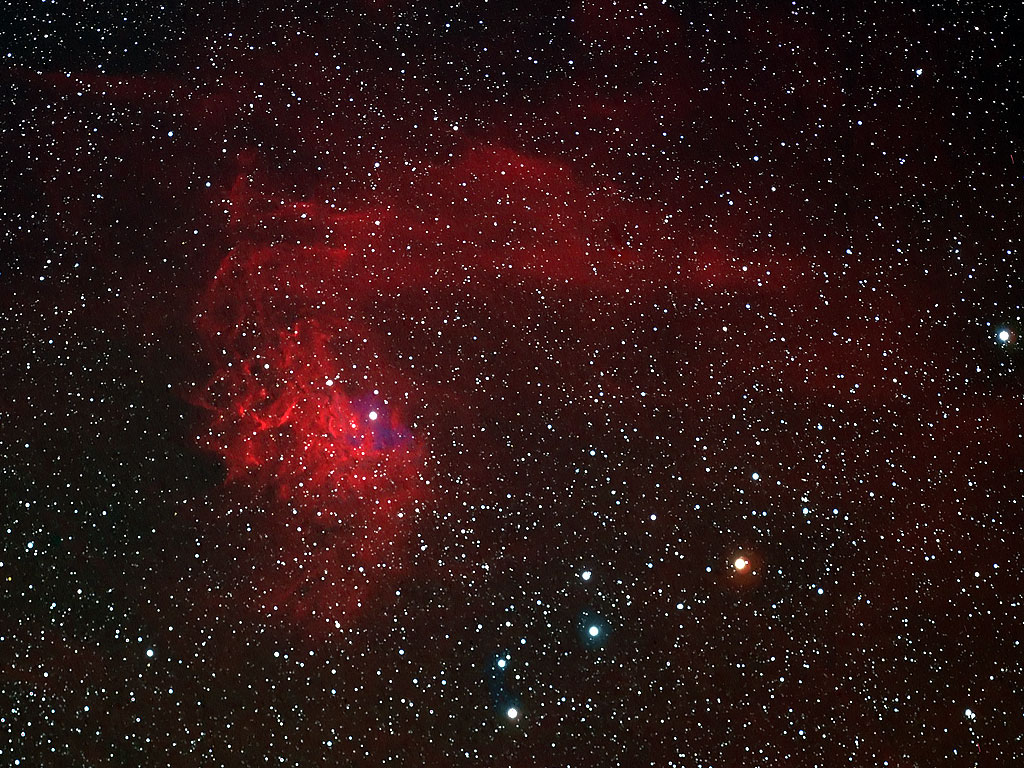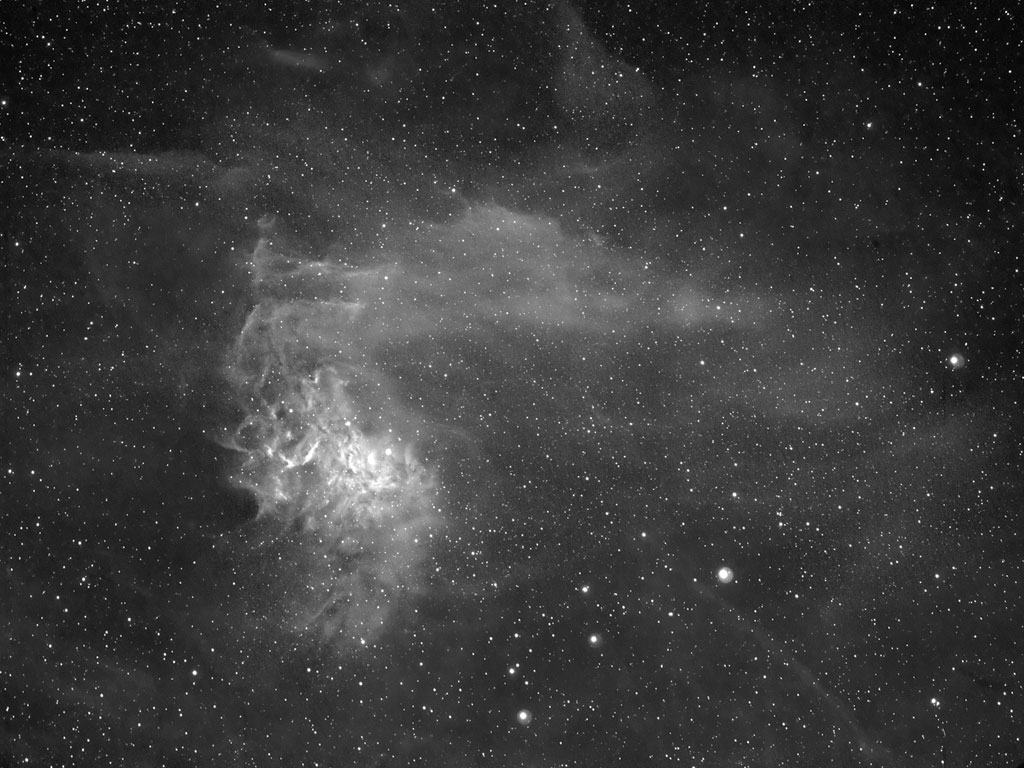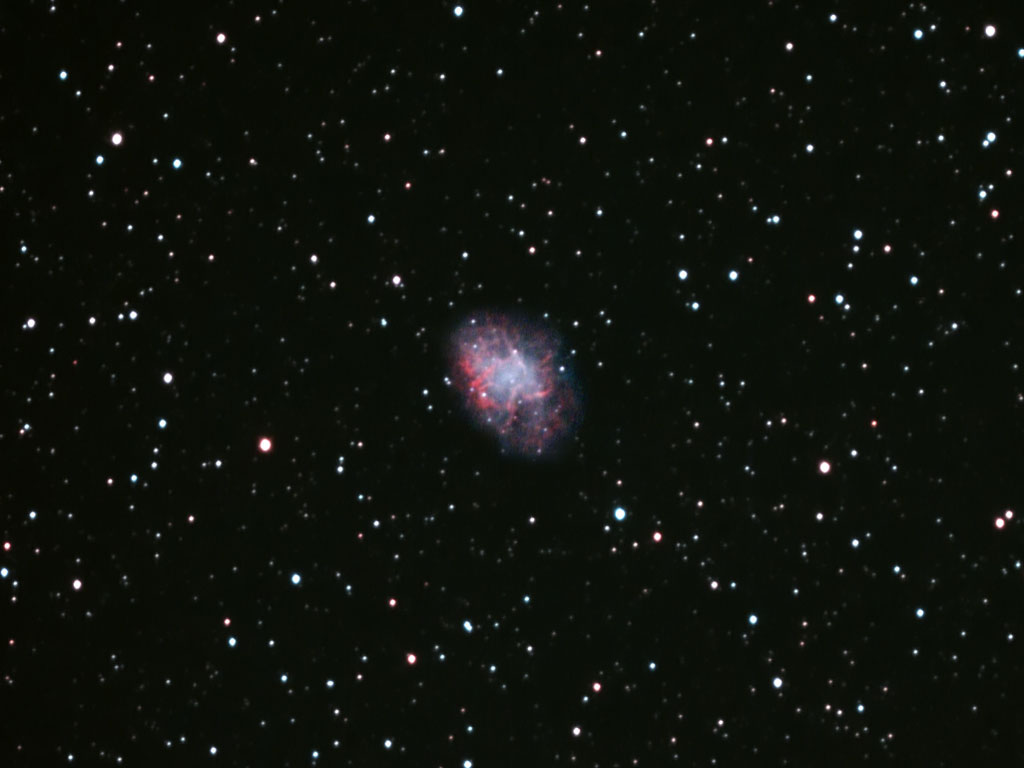M1 is, as the name tells us, the first object in the famous Messier Catalog of star clusters and nebulae. M1 is unlike the other nebulae presented here, however. It is a supernova remnant—an expanding cloud of gas and heavy elements that are the remains of a star that exploded. What's more, we know exactly when this star exploded: July 4, 1054, CE. That's the date on which Chinese astronomers reported seeing what they called a “Guest Star,” an extremely bright star that appeared in an instant, seemingly out of nothing. The Chinese astronomers recorded the star’s location and their star charts are sufficiently accurate to show that the point they recorded is the same as the location of the Crab Nebula.
Supernovas are among the most important objects of study to astronomers because of what they tell us about the Universe as a whole and about ourselves. Firstly, one type of supernova. the type I-A, has the same brightness no matter where or when it occurs. That means that it is possible to use the apparent brightness of type I-A supernovas to measure the distance to the galaxy in which it occurs. Supernovas may be so bright in their initial stages that they outshine all the rest of the stars in their galaxies combined. This makes supernovas just about the most energetic events—the largest explosions—in the Universe. The enormous brightness of supernovas makes them visible at vast distances, and it the ability to detect supernovas in the very distant Universe is one of the most important tools for measuring the size and age of the Universe. It was also through observing very distant type I-A supernovas that it was learned that the rate of expansion of the Universe is increasing with time, and from this we know the future of the Universe. After their initial flash, the brightness diminishes rather rapidly as the elements thrown off by the explosion expand and cool.
Secondly, the importance of supernovas to us is very direct: we would not be here without them. The Big Bang created a great deal of hydrogen and very small amounts of helium, lithium, and beryllium. Everything in the Universe heavier than beryllium was created inside stars. That includes you and everything you see around you. It includes the carbon that is the basis of all life that we know of and the oxygen that sustains our lives and rusts our cars. Stars, however, cannot fuse iron into heavier elements. Only a supernova explosion releases the enormous energy that is required to produce the elements that are heavier than iron. That means that the gold and silver in your jewelry came from exploding stars.
I shall repeat, because this is important: No heavy elements were created when the Universe came into being 13.7 billion years ago; all elements heavier than beryllium and up to iron were created by the fusion of lighter elements in “normal” stars. Everything in the Universe heavier than iron was produced in the explosion of massive stars. You and I and the planet we live on, the food we eat, and the air we breathe, are literally made of stardust.


